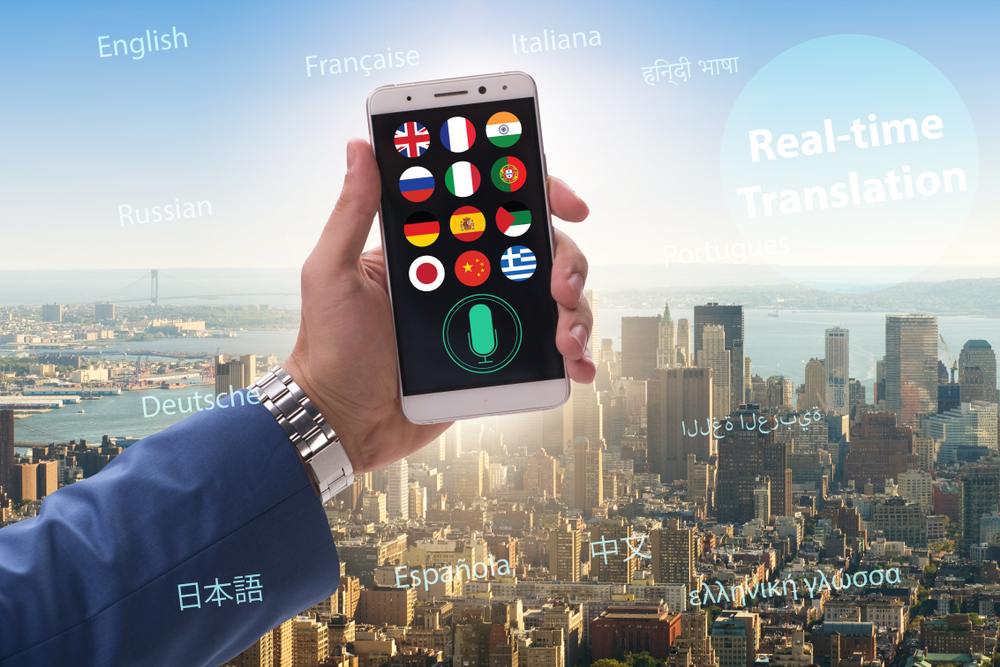Imagine effortlessly understanding anyone in the world—regardless of the language they speak. Whether traveling, conducting global business, or delivering healthcare, real-time voice translation breaks down communication barriers and enables seamless conversations. It works by recognizing your speech, translating it, and speaking it back in another language—within seconds. This article explores what speech-to-speech technology is, how it works, its key features and applications, major challenges, and the future of real-time speech translation.
What is Speech-to-Speech?
Speech-to-speech is a form of real-time voice translation technology that enables spoken words in one language to be translated and spoken aloud in another. It integrates speech recognition, machine translation, and text-to-speech synthesis into a unified process, allowing two people who speak different languages to hold a natural, flowing conversation.
This technology is increasingly used in applications such as multilingual customer service, cross-border communication, and travel assistance. is a real-time language processing technology that allows spoken words in one language to be translated and spoken back in another. It combines speech recognition, machine translation, and speech synthesis into a single, seamless workflow. This enables natural, direct communication between people who speak different languages.
How Does Speech-to-Speech Technology Work?
Speech-to-speech translation involves a seamless combination of several advanced AI technologies. The process starts when a speaker’s voice is captured in real time. This audio is then passed through an automatic speech recognition (ASR) system, which transcribes spoken words into text by analyzing sound patterns and linguistic cues.
Once the text is available, a machine translation (MT) engine steps in to convert it into the target language. Modern MT systems leverage deep neural networks that understand grammar, context, idioms, and tone—ensuring the translated output is both accurate and natural.
Finally, the translated text is fed into a text-to-speech (TTS) module, which generates spoken audio in the target language. This output aims to preserve natural rhythm, intonation, and emotional expression, mimicking a real human voice.
Altogether, this pipeline transforms real-time speech into another language with minimal delay, enabling fluid, cross-language conversations across industries and use cases.
Key Features of Speech-to-Speech Technology
Speech-to-speech technology brings together several advanced capabilities to support effective and natural multilingual communication:
- Real-Time Translation: Converts spoken language to another almost instantly, enabling smooth, uninterrupted dialogue.
- Multilingual Support: Covers a wide range of global languages, making it suitable for international use.
- Natural Voice Output: Produces speech with human-like tone and emotion for a more authentic experience.
- Speaker Identification: Distinguishes between different speakers to ensure accurate transcription and translation.
- Accent Adaptability: Adapts to various accents and dialects to improve recognition accuracy.
Use Cases of Speech-to-Speech Technology
It has a wide range of applications across industries:
- Healthcare Consultations: Helps doctors and patients communicate clearly across language barriers in real time.
- International Business Meetings: Facilitates seamless multilingual communication for cross-border collaboration.
- Travel Assistance: Assists tourists with navigation, service inquiries, and emergency communication.
- Customer Support: Enables companies to provide localized support in the user’s preferred language.
- Education & Remote Learning: Bridges language gaps in virtual classrooms and online training.
- Emergency Response: Supports first responders and crisis teams in delivering timely, accurate multilingual communication during critical situations.
Challenges in Speech-to-Speech Translation
While speech-to-speech technology has made impressive strides, it still faces several critical challenges that affect performance and user experience. One of the most pressing issues is accuracy—errors in speech recognition, translation, or voice synthesis can alter meanings and lead to confusion. This is particularly serious in fields like healthcare or law, where precise communication is essential.
Latency is another challenge. Even small delays in processing can interrupt the natural flow of conversation, making interactions feel awkward or disjointed—especially in live customer support or emergency scenarios.
Maintaining the natural tone and style of the original speaker is also difficult. Most systems struggle to replicate emotional nuances or speaking patterns, leading to robotic-sounding results that reduce trust and engagement.
Finally, the availability of high-quality training data limits language support. Many lesser-spoken or under-resourced languages still lack the datasets needed to build accurate models, making the technology less inclusive.
The Future of Real-Time Voice Translation
The future of speech-to-speech translation is being shaped by rapid advancements in AI, neural networks, and real-time communication infrastructure. Accuracy is expected to improve as translation models become more context-aware—able to interpret idioms, slang, and cultural nuances. At the same time, reductions in processing latency will allow for even more seamless communication, critical for live customer service, education, and emergency use.
Support for low-resource languages is also on the rise, driven by better data collection and multilingual training techniques. Meanwhile, improvements in text-to-speech technology will help preserve speaker tone and emotional expression, making translations feel more human.
Looking ahead, speech-to-speech technology is likely to extend into immersive environments like augmented and virtual reality, enabling real-time voice translation in global meetings, training sessions, and social interactions in the metaverse.- Better Accuracy: Smarter models will understand idioms, culture, and context.
Adding Real-Time Voice Interaction to Your App? Start with ZEGOCLOUD
As speech-to-speech technology continues to shape new ways of human-computer interaction, the demand for smooth, real-time voice communication is higher than ever. Whether you’re building voice assistants, audio messaging apps, or smart interaction features, having a reliable foundation is key.
ZEGOCLOUD provides developers with low-latency voice streaming, AI-powered speech recognition (ASR), and natural-sounding speech synthesis (TTS). These capabilities make it easy to create real-time, intelligent voice interaction experiences—whether you’re building an AI assistant, smart support bot, or interactive voice interface.
Let’s Build APP Together
Start building with real-time video, voice & chat SDK for apps today!










